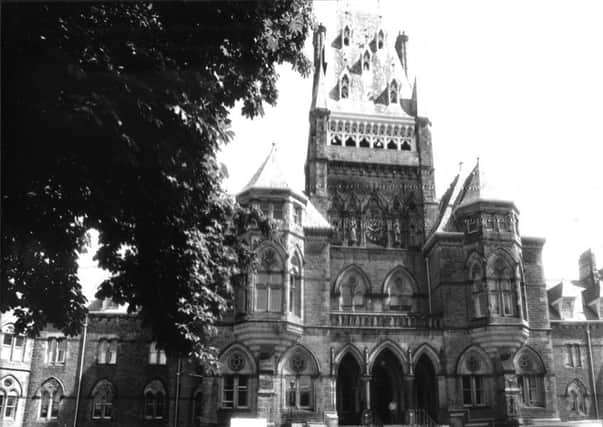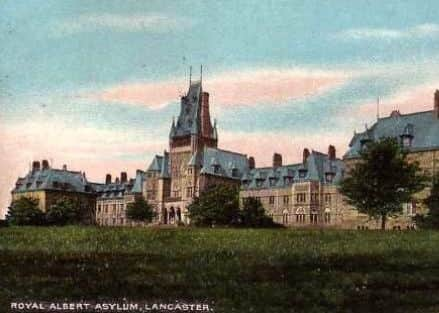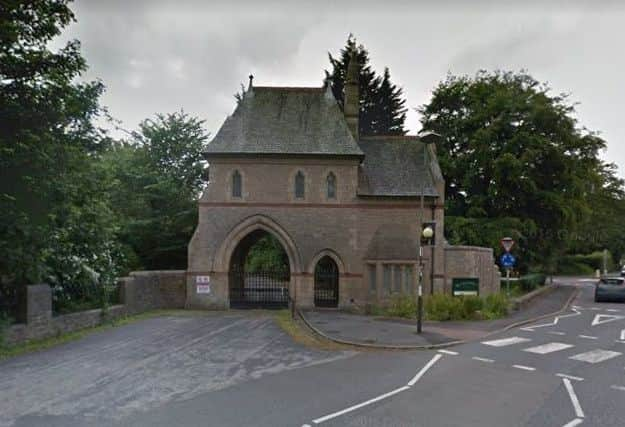Behind walls of Royal Albert asylum


Dr Denis Devitre then laid the groundwork to open it, along with an association of Quakers.
Following voluntary subscriptions and charitable donations from other villages which wanted to contribute to the cause, the asylum’s construction began in 1868 and was completed by 1873.
Advertisement
Hide AdAdvertisement
Hide AdOn Ashton Road at the entrance to the drive to the hospital is a lodge, built in about 1873.


This was called West Lodge and was also in gothic Revival style.
That’s how the ‘Royal Albert Asylum for Idiots and Imbeciles of the Seven Northern Counties’ was born.
The hospital was established under the Lunacy Act 1845, at a time when there was little understanding of the difference between learning difficulties and mental illness.
Advertisement
Hide AdAdvertisement
Hide AdBack then, it was the only institution of its kind in the North of England which admitted free patients.


However, it was only initially aimed at the care and education of children from the ages of six and 15 who had learning disabilities.
Four years after opening, it held 196 patients from England’s northern counties.
In 1909, 85 per cent of its 662 patients were under 15.
It was then renamed again the following year, to ‘The Royal Albert Institution, Lancaster’. Following the implementation of the Mental Deficiency Act in 1913, it was agreed that no more than 10 per cent of its patients should be under the age of 16 and the asylum started taking in adults too.


Advertisement
Hide AdAdvertisement
Hide AdBy its 100th anniversary in 1968, the hospital held more than 1,000 patients, 45 per cent of which were aged over 35.
In an article to mark the 100th anniversary, the hospital was deemed as being in the ‘forefront of the medical world in the mental health section’ and ‘a pioneer in occupational and industrial therapy.’
But, what was life like inside the asylum?
Surprisingly, there was plenty of choice in entertainment and sport at the Royal Albert Hospital – there are records of an annual staff play, a toy jazz band, football and cricket teams and children’s shows.


When it came to bathing, there were 12 rules staff members had to follow.
Advertisement
Hide AdAdvertisement
Hide AdMalcolm Alston, a former nurse at Royal Albert in the mid 1960s, said one of the rules was that the bath water always had to be at a set temperature – Malcolm remembered how one of the nurses would empty the bathtub every time the water temperature didn’t reach that exact number.
This even led to a quarrel among two staff members, Malcolm said, when one of them lost his temper over that nurse’s preciseness.
Other rules included running cold water first and staff keeping hold of tap keys because residents weren’t allowed to run baths themselves.
Malcolm admitted that some of these rules were ‘stupid’ but he took them on because he ‘didn’t know anything differently’.
Patients were also given ‘privileges’ and ‘punishments’.
Advertisement
Hide AdAdvertisement
Hide AdNorman, a patient at Royal Albert in the 1940s, was punished for smashing a window during meal time. He recalls being punished by not being allowed sweets or spending money for a whole month.
His punishment also meant ‘no privileges’, such as going out, going to see the pictures and dancing.
In the 1950s, following a strict policy of sexual segregation for both staff and residents, there were also punishments for girls and boys who tried to endeavor in romantic gestures.
Mary Thompson, a former resident at the hospital, remembered how some of her friends were sent to Coupland Ward for a week for writing love letters to their boyfriends.
Advertisement
Hide AdAdvertisement
Hide AdHowever, it wouldn’t be long till all these punishments and bathing rules would be no more.
The implementation of the ‘Care in the Community’ policy in the 80s meant that mentally disabled people were to be treated and cared for in their homes rather than in an institution, Royal Albert Hospital’s patients started relocating back into the community.
Royal Albert’s closure arrived in 1996.
All patients had already been relocated, which led to the closure of the hospital in the same year after 126 years.
This brought quite a bit of controversy, as almost 650 jobs were axed, including qualified nurses, administrative staff, tradesmen, domestic staff, porters and security staff.
Advertisement
Hide AdAdvertisement
Hide AdHowever, David Jordison, chief executive in the six final years of the institution, said at the time of the hospital’s closure, that the Royal Albert Hospital was, “a happy place full of laughter and it was also the only home many of the people in care ever knew”, adding that there was “an incredibly strong relationship between patients and staff.”
On the other hand, he also admitted the hospital did not always provide ideal living conditions saying: “The hospital was split into large single sex wards and was sometimes quite unpleasant - because of the problems associated with the sort of long-stay patients we had.”
Following its closure, the former hospital was acquired by Lancaster’s Jamea Al Kauthar Islamic College and is used nowadays as an educational establishment for Muslim girls over the age of 11.
Opened in September 1997, the independent boarding school has welcomed girls from all over the world.
Advertisement
Hide AdAdvertisement
Hide AdThe school is owned by the Al Badr Islamic trust and registered for 500 pupils and currently has around 380 girls.
From being one of the biggest asylums in the North of England and one of the pioneers in the treatment of mental health disabilities to becoming an Islamic academic establishment for girls, Royal Albert Hospital certainly exceeded any initial expectations of what the landmark building would serve as.
The main part of the hospital was recognised as a Grade II* listed building on November 30, 1970.
On the same date the West Lodge was listed at Grade II.